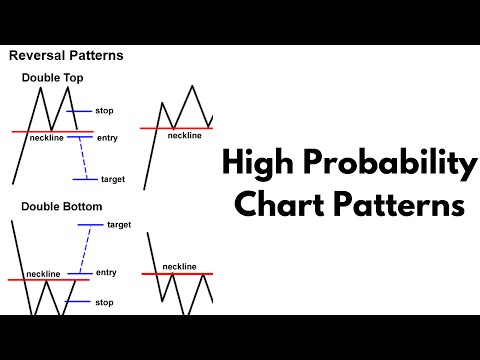
Demand deposit accounts can serve as a safe place to keep your money and access it at any time. A money market account essentially combines features of a checking account and a savings account into one. These accounts are most useful for managing everyday spending, paying bills or withdrawing cash. A checking account is the best example of a demand deposit account in action. Such an account lets you withdraw funds without having to give the financial institution any advance notice.
- Locking in your money for a fixed rate can be beneficial in a falling rate environment, but it may not be a good idea at a time when rates are rising, depending on your individual circumstances.
- They are one of the most liquid assets that exist because you can access the money in a demand deposit account on demand.
- Before joining Forbes Advisor, Mitch worked for several sites, including Bankrate, Investopedia, Interest, PrimeRates and FlexJobs.
- Most banks will take deposits in the form of cash, checks, money orders, or cashier’s checks.
- With a demand deposit account, you’re allowed to put money into the account or take money out of the account at any time, without penalty.
- Post-pandemic investments and savings in Demand Deposits are rapidly increasing.
Unlike demand deposit accounts, which allow you to take money out at any time, time deposit accounts, also called term deposits, require you to deposit your money for a specific length of time. The most common type of time deposit account is a certificate of deposit or CD, which requires you to commit your savings for a specific term of months or years. Time deposit accounts, also known as term deposit accounts, are designed for holding your money for a set amount of time. Withdrawing your money from such an account before the term has ended typically results in a penalty. In exchange for locking away your money, time deposit accounts often pay higher yields than demand deposit accounts. Bank accounts aren’t all alike and it’s important to note how demand deposit accounts differ from time deposit accounts.
What are the two main types of deposits that can be accessed at banks?
Daphne Foreman is a former Banking and Personal Finance Analyst for Forbes Advisor. She has worked as a personal finance editor, writer, and content strategist covering banking, credit cards, insurance and investing. As a small business owner and former financial advisor, Daphne has first-hand experience with the challenges individuals face in making smart financial choices. We think it’s important for you to understand how we make money.

So, whether you’re reading an article or a review, you can trust that you’re getting credible and dependable information. Our mission is to provide readers with accurate and unbiased information, and we have editorial standards in place to ensure that happens. Our editors and reporters thoroughly fact-check editorial content to ensure the information you’re reading is accurate. We maintain a firewall between our advertisers and our editorial team. Our editorial team does not receive direct compensation from our advertisers.
🤔 Understanding demand deposit
Therefore, this compensation may impact how, where and in what order products appear within listing categories, except where prohibited by law for our mortgage, home equity and other home lending products. While we strive to provide a wide range offers, Bankrate does not include information about every financial or credit product or service. Deposits are often required on many large purchases, such as real estate or vehicles, for which sellers require payment plans.
This Bull Market Indicator Has Been Spot-On — 15 for 15 — Over the … – The Motley Fool
This Bull Market Indicator Has Been Spot-On — 15 for 15 — Over the ….
Posted: Sun, 18 Jun 2023 09:06:00 GMT [source]
Normally, the bank pays a nominal amount of interest on deposits made through these accounts. A current account (DDA) is a bank account in which example of demand deposit you can retrieve cash for everyday use without notice. DDA accounts may pay interest on deposited money without a requirement to do so.
PART 344—U.S. TREASURY SECURITIES—STATE AND LOCAL GOVERNMENT SERIES
If you want a reliable, easily accessible account in which to store your money until you need it for everyday expenses, a checking account can do those things. For money that you don’t need to access regularly, and that you’re counting on for some growth, consider a savings account or certificate of deposit since both earn interest. A savings account is also a good place to build an emergency fund.
- You can also conveniently access your cash whenever you need it in a few different ways, including checks, ATM withdrawals and taking cash out at the bank.
- With a term deposit, you have to wait a predetermined amount of time before you withdraw your money.
- Demand deposits are deposits made in various current accounts or DDA types.
- Once your deposit account reaches maturity after the specified term, you can withdraw the money you deposited initially, along with interest earned.
- Also, consider whether the bank offers any extra incentives, such as interest on checking or rewards for debit card purchases.
M1 money is a country’s basic money supply that’s used as a medium of exchange. M1 includes demand deposits and checking accounts, which are the most commonly used exchange mediums through the use of debit cards and ATMs. Of all the components of the money supply, M1 is defined the most narrowly. M1 money is the money supply metric most frequently utilized by economists to reference how much money is in circulation in a country. Consumers can spend the money they have in their checking accounts without restriction and banks tend to make it easy to access and use the money in the accounts.
Can I access Demand Deposits from financial institutions like Banks, NBFCs, etc.?
A demand deposit is money that you deposit into a bank account from which you can withdraw on demand, at any time without any advance notice to the bank. Common examples of accounts that are often demand deposit accounts include many checking and savings accounts. Keep in mind, however, that not all checking accounts and savings accounts are demand deposit accounts.
FedNow draws near, the U.S. Bank perspective – The Paypers
FedNow draws near, the U.S. Bank perspective.
Posted: Tue, 13 Jun 2023 09:15:00 GMT [source]
Your financial institution may also charge monthly maintenance or service fees. Many checking accounts do not provide interest, while most savings accounts and certificates of deposit (CDs) do. Demand deposits and term deposits refer to two different types of deposit accounts available at a bank or similar financial institution, such as a credit union. Demand deposits and term deposits differ in terms of accessibility or liquidity, and in the amount of interest that can be earned on the deposited funds.



Komentar